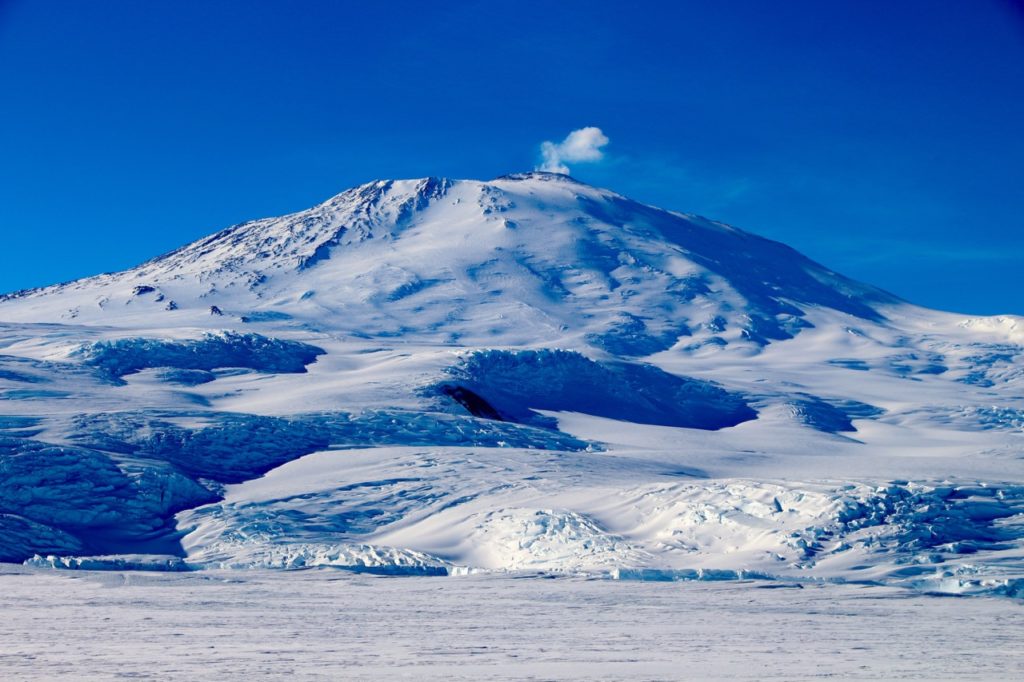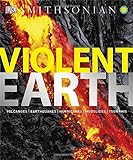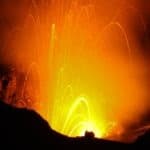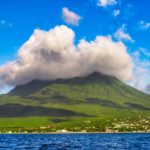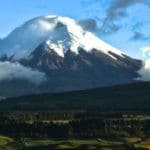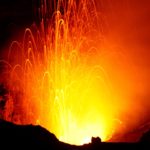From stewing lava lakes to fatal eruptions, we chart the most active volcanoes in the world
Nature has many fearsome wonders – earthquakes, hurricanes, tsunamis – but none so fearsome as the most active volcanoes in the world. These hellish peaks feature in tales of ardour and heroism, loom over humble settlements and whisper threats of violence and destruction. Though potentially lethal, they hold a magnetic beauty that thrillseekers find irresistible.
We at Atlas & Boots have visited two active volcanoes – Mount Yasur in Vanuatu and Erta Ale in Ethiopia – and can attest to their deadly beauty. Below, we chart their most active peers from across the globe.
Our methodology
Scientists define an ‘active volcano’ as one that has erupted in the last 10,000 years. By this definition, there are 1,500 active volcanoes in the world today, 75% of which are located along the Pacific Ring of Fire, a tectonic belt that lines the edges of the Pacific Ocean.
To find the most active volcanoes in the world, we downloaded the list of notable volcanoes from the Smithsonian Institution’s Global Volcanism Program. We then filtered for ‘Frequently Active’, which left us with 73 volcanoes. We ranked these by three additional traits: Multiple Large Eruptions, Significant Lava Effusion and Major Eruption, weighting the first most heavily. This allowed us to refine our list to the 10 most active volcanoes in the world.
Most active volcanoes in the world
Each volcano is listed along with its traits. We also list its place in the Volcanic Explosivity Index, a ranking of the largest volcanic explosions in recent geological history (7 being the highest).
Sakurajima, Aira Caldera
Location: Kyushu, Japan
Traits: Frequently Active, Multiple Large Eruptions, Significant Lava Effusion, Major Eruption
Explosivity Index: 6
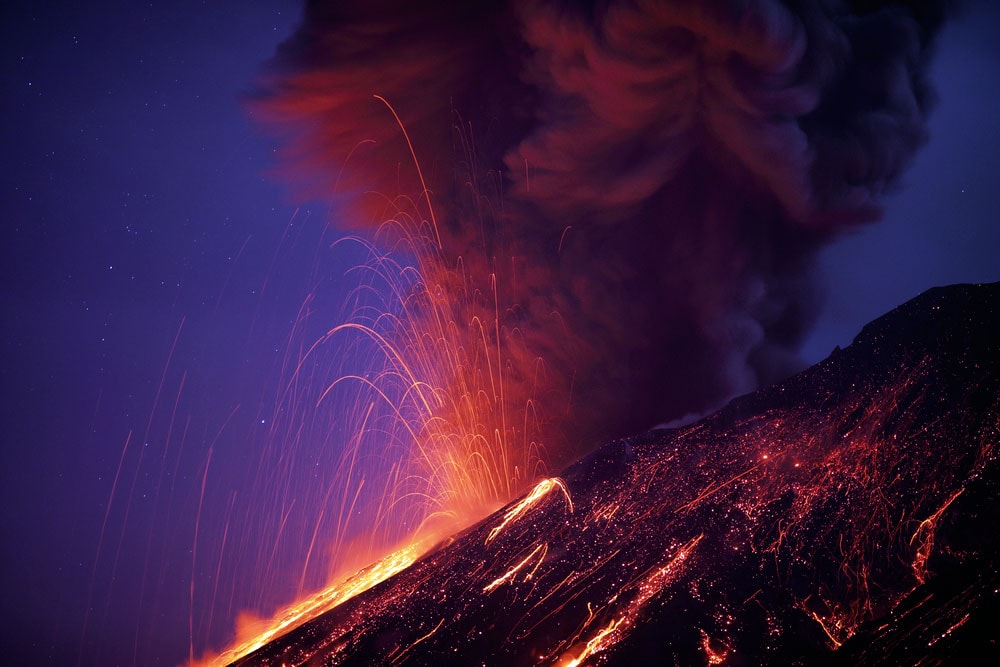
Sakurajima in the Aira caldera in Japan has been called the most dangerous volcano in the world – a sobering thought given that the surrounding city of Kagoshima has a population of 900,000. The volcano’s current eruption period began in March 2017 and has seen a number of explosive events, eruption plumes and minor ashfall.
Thankfully, the area has one of the world’s most advanced seismologic monitoring systems. Moreover, residents are trained in evacuation procedures and children are known to wear hardhats to protect against falling debris!
Etna
Location: Sicily, Italy
Traits: Frequently Active, Multiple Large Eruptions, Significant Lava Effusion
Explosivity Index: 5
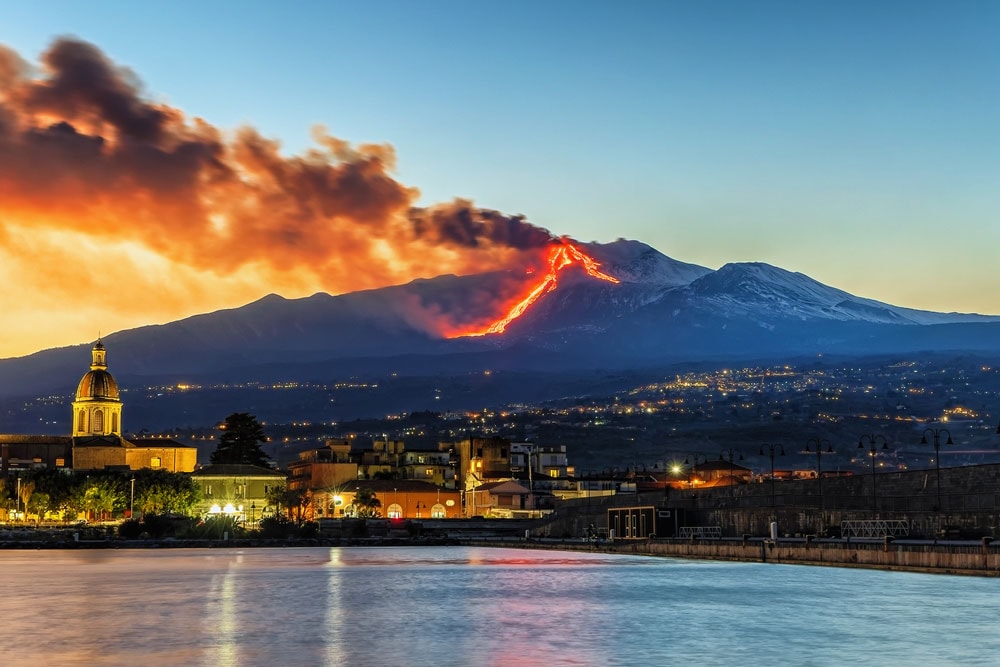
Mount Etna is the largest of Europe’s most active volcanoes. It first erupted around 500,000 years ago and has been doing so continuously for 3,500 years.
Situated on the margin between the African Plate and the Eurasian Plate, Etna has a base circumference of an incredible 140km (87mi) and is by far the largest of Italy’s three active volcanoes, the others being Stromboli and Mount Vesuvius.
In Greek mythology, Zeus trapped the deadly 100-headed monster Typhon beneath the mountain who in his rage caused ‘rivers of fire’ to pour forth. It’s then fitting perhaps that, in 2021, Etna erupted so much volcanic material that its height increased by approximately 30m (100ft).
Masaya
Location: Masaya, Nicaragua
Traits: Frequently Active, Multiple Large Eruptions, Major Eruption
Explosivity Index: 6
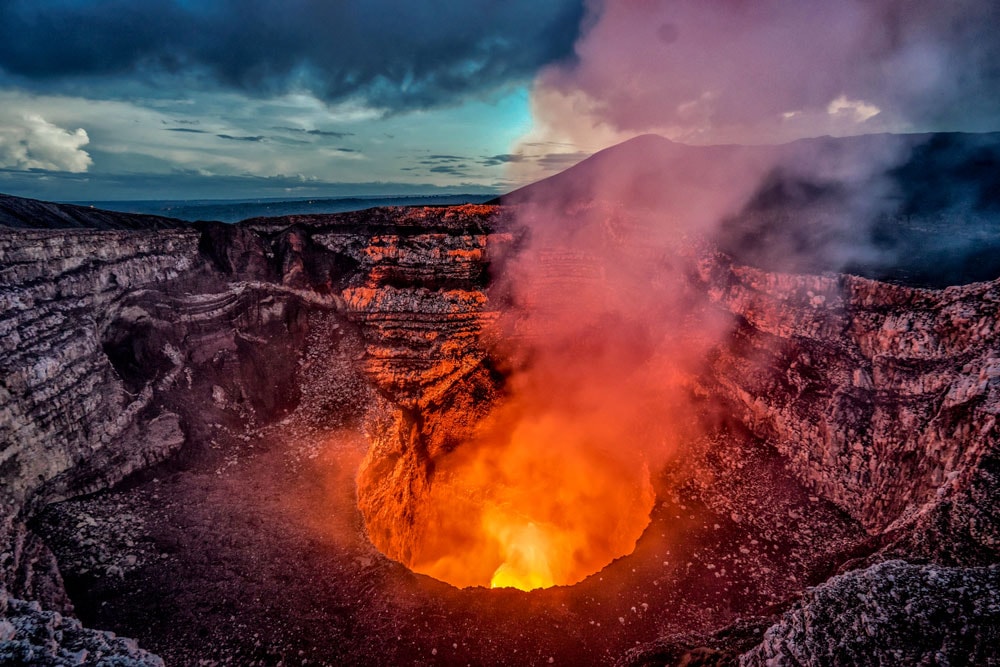
Masaya caldera lends its name to Nicaragua’s first and largest national park, 20km (12mi) south of the capital. The volcano has been frequently active since the time of the Spanish Conquistadors, who sought to extract the volcano’s molten ‘gold’ from an active lava lake.
Masaya’s current eruption period began in October 2015, and has produced continued thermal activity, seismicity and sulfur dioxide emissions.
In 2020, American aerialist Nik Wallenda – best known as the first person to walk a tightrope stretched directly over Niagara Falls – walked 550m (1,800ft) on a steel cable over Masaya caldera.
Tongariro
Location: North Island, New Zealand
Traits: Frequently Active, Multiple Large Eruptions
Explosivity Index: 5
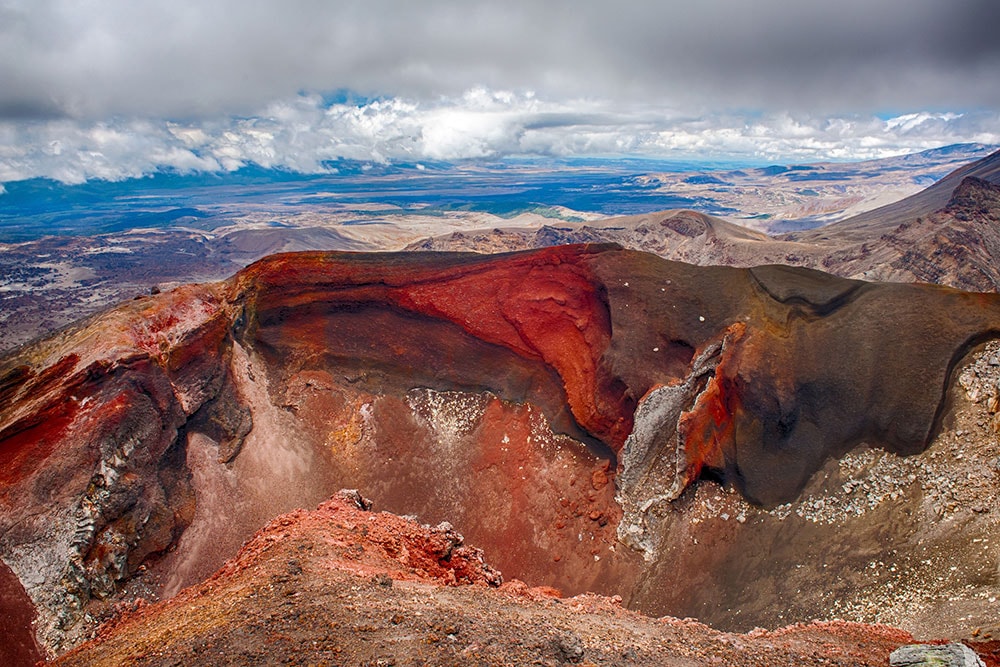
Mount Tongariro is located in New Zealand’s first national park. In 1887, it was designated as sacred by the paramount chief of the Māori tribe Ngāti Tūwharetoa. It has since been awarded dual UNESCO World Heritage Site status for its outstanding natural and cultural significance.
More significant to some, Tongariro was used as a filming location for Peter Jackson’s epic Lord of the Rings trilogy. New Zealand’s Department of Conservation offers coordinates for filming locations, so that eager fans may venture into Mordor themselves.
Shiveluch
Location: Kamchatka Krai, Russia
Traits: Frequently Active, Multiple Large Eruptions
Explosivity Index: 5
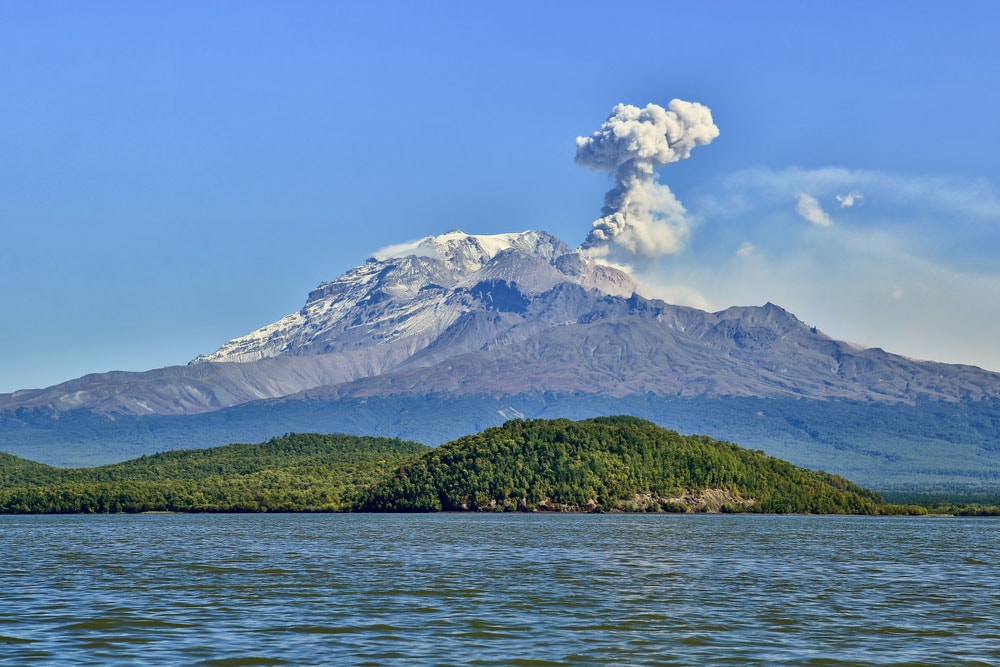
Shiveluch is the northernmost active volcano in Kamchatka Krai in the Russian Far East. Rising to a height of 3,283m (10,770ft), Shiveluch frequently erupts magma, causing hot avalanches and lava dome formations at the summit.
The current eruption period began in August 1999 and ash emissions have often disrupted air traffic connecting the Asian continent to North America. In fact, in 2015, ash from Shiveluch shot to a height of 9,100m (30,000ft) and crossed the Bering Sea, into Alaska!
Popocatepetl
Location: Mexico
Traits: Frequently Active, Multiple Large Eruptions
Explosivity Index: 5
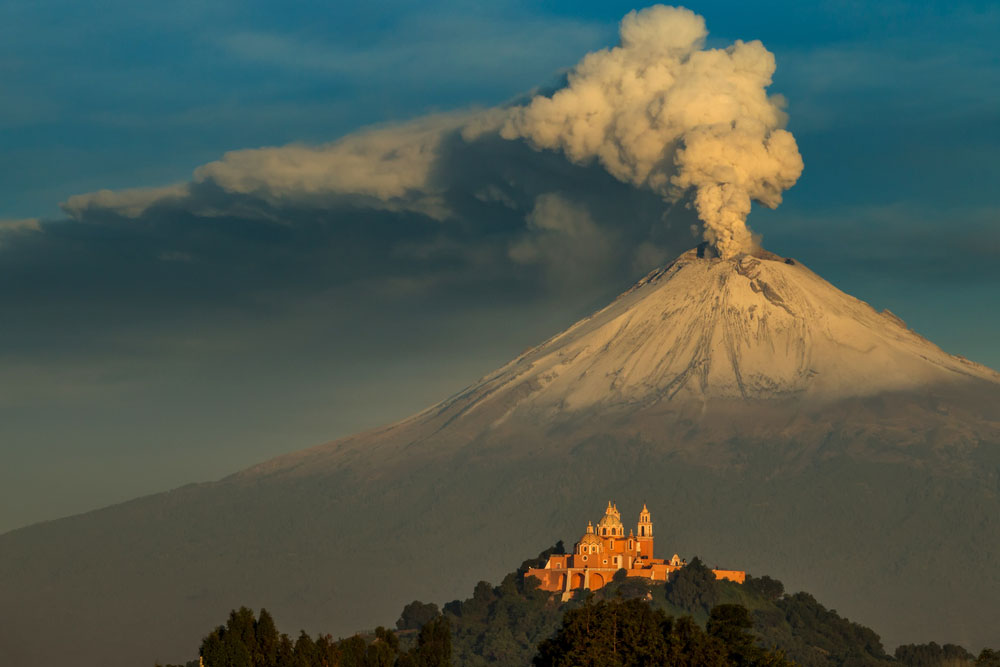
The picturesque Popocatepetl was once home to glaciers, but these were gone by 2001 thanks to warming temperatures. Ice remains on its slopes, but no longer shows characteristic features of glaciers such as crevasses.
In terms of explosive activity and population threat, Popocatepetl ranks highest in Mexico and North America. In fact, according to the Natural History Museum, Popocatepetl is one of the 10 most populated volcanoes in the world with around 30 million people living within a 70km (43mi) radius. Scientists have warned that large stratovolcanoes like Popocatépetl can switch from low eruptive behaviour to catastrophic Plinian eruptions, and are currently working to determine the associated mechanisms and timescales.
Santa María
Location: Quetzaltenango Department, Guatemala
Traits: Frequently Active, Significant Lava Effusion, Major Eruption
Explosivity Index: 6
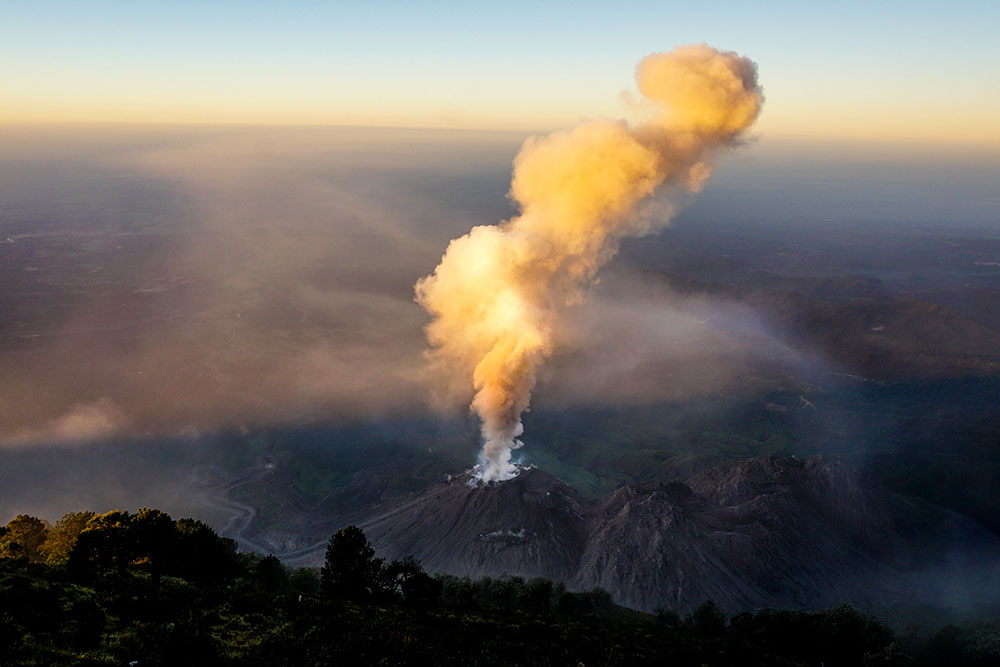
Santa María is part of a chain of large stratovolcanoes that rise above the Pacific coastal plain of Guatemala. The volcano erupted catastrophically in 1902, killing over 6,000 people and devastating much of southwest Guatemala. The eruption was one of the three largest of the 20th century, and one of the five largest of the past 200 (possibly 300) years.
Today, Santa María and its side cone, Santiaguito, constitute one of the most active volcanoes in the world with almost continuous minor explosions and periodic lava extrusion, larger explosions and pyroclastic flows.
Kilauea
Location: Hawaii, USA
Traits: Frequently Active, Significant Lava Effusion
Explosivity Index: 4
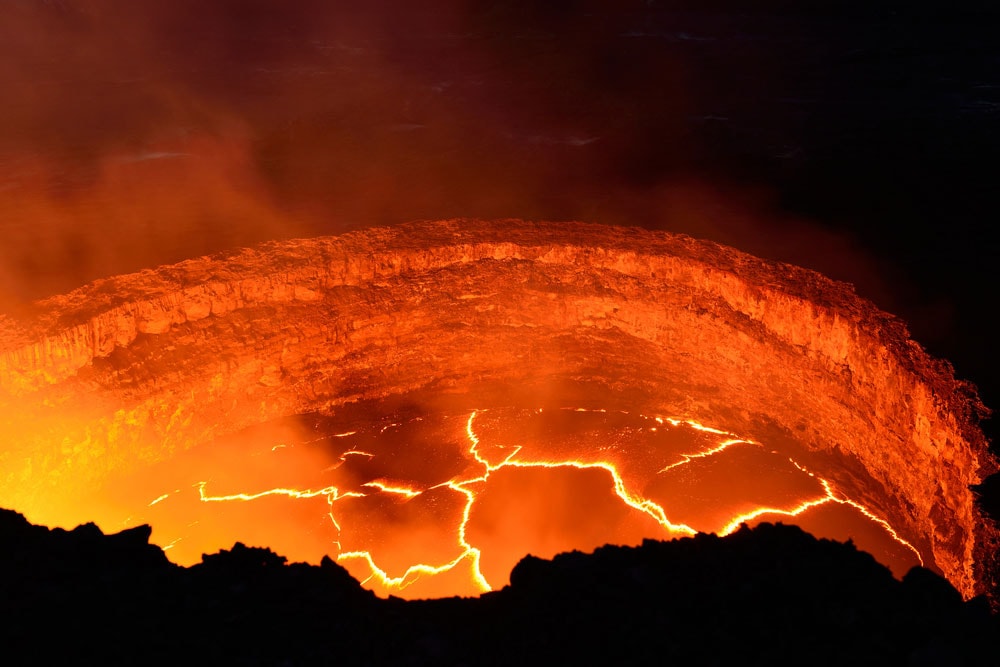
Kilauea is the youngest volcano on Hawaii’s Big Island. It is located on the southeastern slope of neighbouring Mauna Loa and for many years was thought to be a satellite rather than a separate volcano.
Research has shown, however, that Kilauea has its own plumbing system which carries magma to the surface from more than 60km (37mi) below. Moreover, the summit lies on a line of volcanoes that includes Mauna Kea and Kohala, but not Mauna Loa.
Kilauea’s eruptions have claimed parts of the island’s highways, rainforests, homes and even lives. Locals leave leis as offerings to the Fire Goddess Pele who is believed to reside in the lava lakes of Halema‘uma‘u crater.
Piton de la Fournaise
Location: La Réunion Island (French)
Traits: Frequently Active, Significant Lava Effusion
Explosivity Index: 5
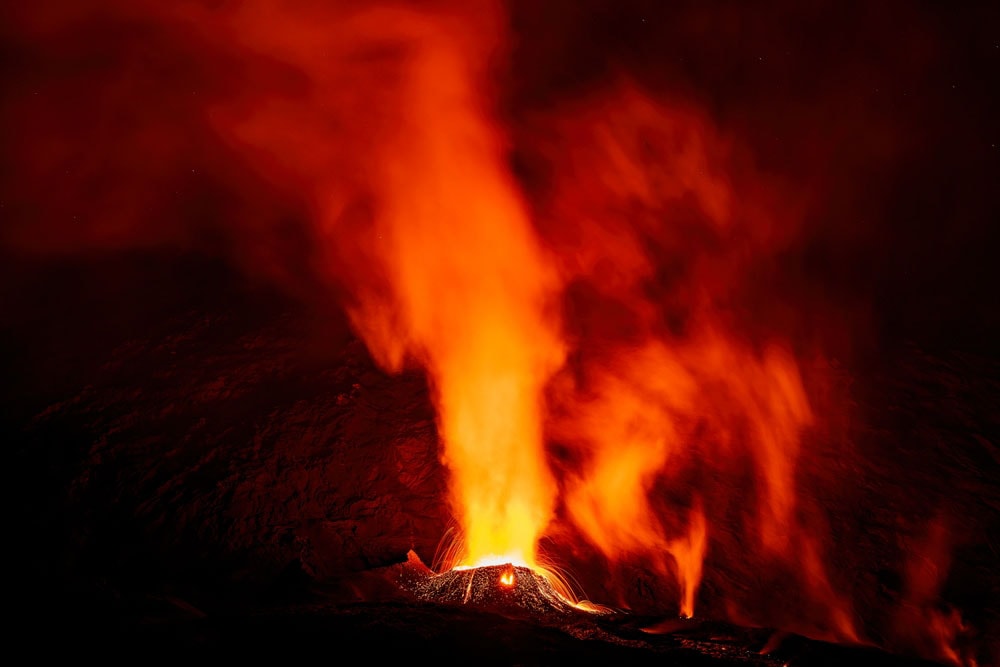
Piton de la Fournaise (‘Peak of the Furnace’) has been spewing basaltic lava for more than half a million years. Located on the eastern side of Réunion, the volcano has a 8km (5mi) wide caldera which is partially breached by the sea and in the initial stages of failure.
Eventually, Enclos Fouqué caldera will collapse into the Indian Ocean and may, some say, cause a ‘megatsunami’.
As it stands, eruptions in the caldera cause limited damage as there is little infrastructure in the area. Eruptions outside of the caldera pose a more serious threat but are rare with only six recorded, the most recent in 1986.
Tolbachik
Location: Kamchatka Krai, Russia
Traits: Frequently Active, Significant Lava Effusion
Explosivity Index: 4
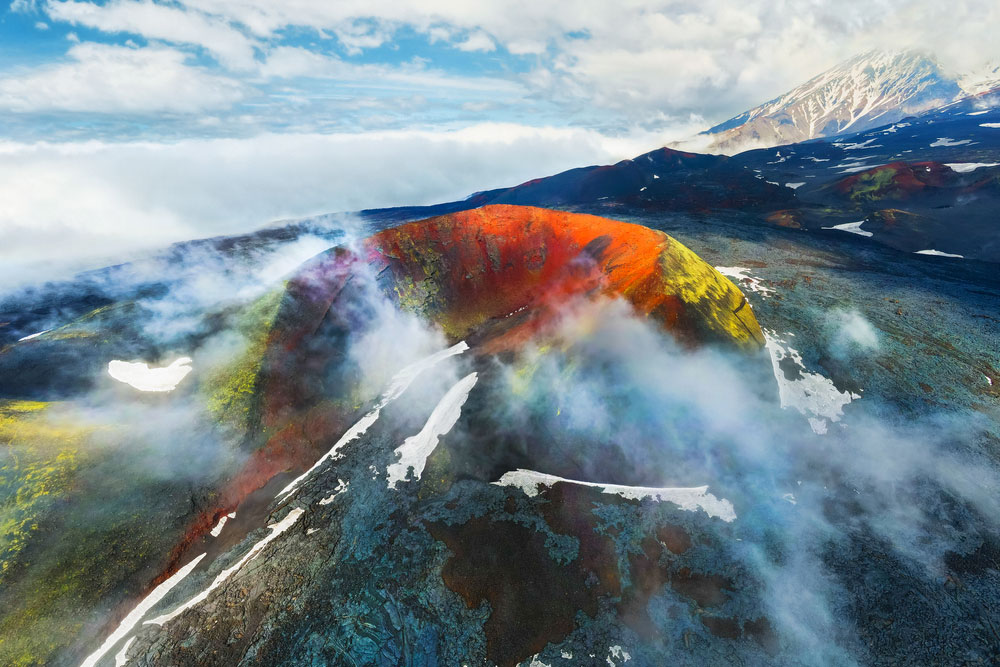
The massive Tolbachik volcano lies at the southern tip of the Kliuchevskaya volcano group on the Kamchatka Peninsula in the Russian Far East. It is part of the Volcanoes of Kamchatka UNESCO World Heritage Site, described as one of the most outstanding volcanic regions in the world.
In November 2012, a strombolian type eruption started from two fissures. Basaltic lava flows move fast and quickly flooded buildings 4km (2.5mi) away. According to the Kamchatka Volcanic Eruption Response Team, the eruption lasted for almost a year, ending in September 2013. Several lava caves were formed as a result.
Honorary mentions
The below fell outside the top 10 most active volcanoes in the world, but are listed here because they are otherwise notable, either because they were connected to a significant event or indeed because we at Atlas & Boots have a personal connection to them.
Stromboli
Location: Stromboli, Italy
Traits: Frequently Active
Explosivity Index: 3
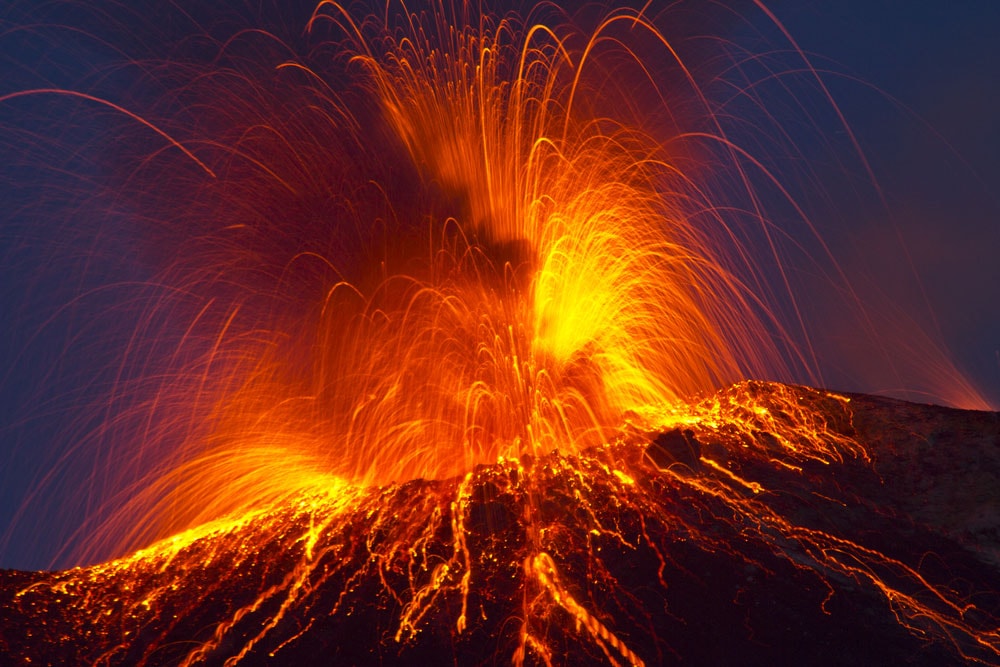
Stromboli is renowned for its violent bursts of molten lava, ash and rock, inspiring the term ‘Strombolian’ in describing comparable activity in other locations.
Stromboli’s eruptions are visible for long distances and it is thus known as the ‘Lighthouse of the Mediterranean’. It is perched on Stromboli island, the peak of a large underwater volcano which begins over 1,000 metres beneath the surface of the sea.
According to scholar Clyde S. Kilby, author J.R.R. Tolkien identified his fictional volcano Mount Doom with Stromboli. The volcano also features in the conclusion of Jules Verne’s novel Journey to the Center of the Earth.
Mount Erebus
Location: Antarctica
Traits: Frequently Active
Explosivity Index: 2
Mount Erebus in Antarctica is the southernmost of the world’s active volcanoes. Located on Ross Island, it has a summit elevation of 3,794m (12,448ft) and is home to one of the world’s few persistent lava lakes.
Erebus is remarkable because its low-level but persistent activity allows volcanologists to study the Strombolian eruptive system very close to the active vents (hundreds of metres).
Erebus is also notable for its fumaroles: vents in the Earth’s crust which allow steam and gases to escape from volcanoes. As soon as the steam leaves one of these vents, it freezes, eventually forming massive snow chimneys.
Erta Ale
Location: Ethiopia
Traits: Frequently Active
Explosivity Index: 1
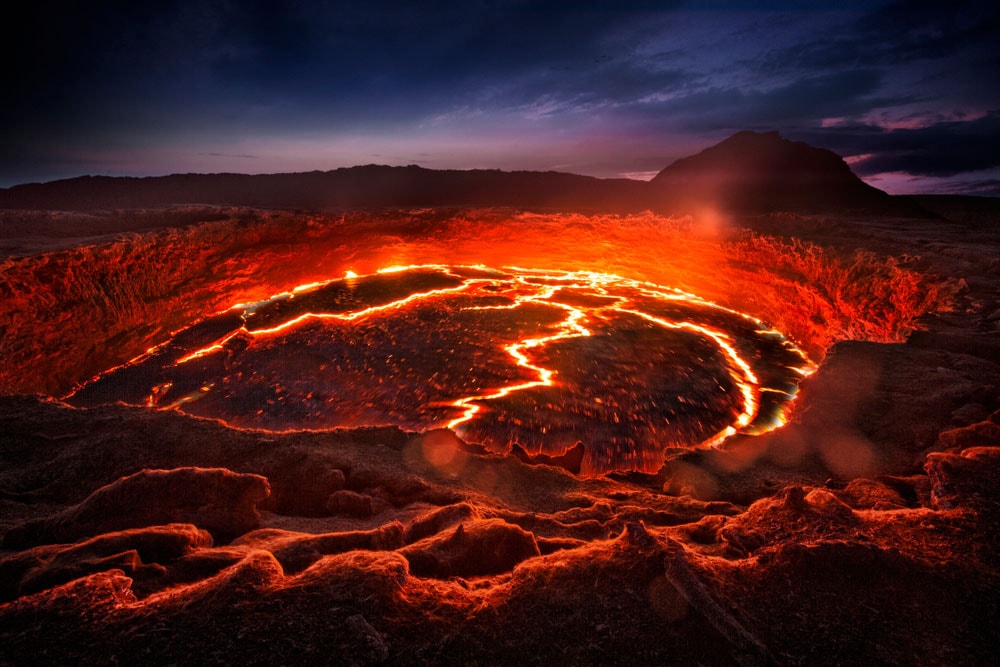
Located in the Afar Depression in northeastern Ethiopia, Erta Ale holds the record for the longest-existing lava lake, present since 1906. Volcanoes with lava lakes are very rare; only Kilauea and Erebus from this list along with Ambrym in Vanuatu and Nyiragongo in the DRC have persistent or near-persistent lava lakes.
Erta Ale, which means ‘smoking mountain’ in the local Afar language, is one of the driest, lowest and hottest places on Earth with temperatures reaching up to 47°C (118°F).
Our visit in 2017 was free of trouble, but there have been reports of violence towards tourists, including a number of fatalities, so caution is advised.
Mount Yasur
Location: Tanna Island, Vanuatu
Traits: Frequently Active
Explosivity Index: 3
Mount Yasur holds a special place in our hearts as our number one travel experience. Located on the remote Pacific island of Tanna, Yasur is famous for its Strombolian eruptions.
The glow of the volcano can be seen from far distances and was apparently what attracted Captain James Cook on the first European journey to the island in 1774.
Today, it is one of the most accessible active volcanoes in the world but has proved fatal for careless tourists venturing into the lower rim area.
Krakatoa
Location: Sunda Strait, Indonesia
Traits: Frequently Active, Major Eruption
Explosivity Index: 6
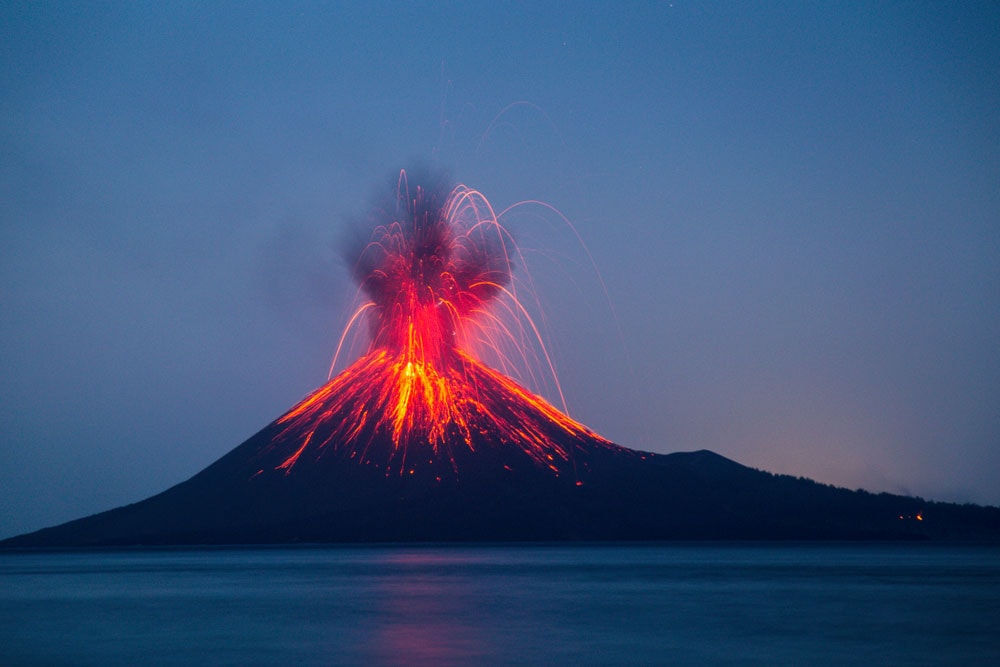
Krakatoa, also known as Krakatau, was one the most famous volcanoes in the world, best known for its 1883 eruption, one of the deadliest volcanic events in recorded history. More than 36,000 deaths are attributed to the eruption and the resulting tsunamis.
The eruption, which lasted from May to October, peaked in the late morning hours of 27 August when over 70% of the island of Krakatoa in Indonesia and its surrounding archipelago collapsed into a caldera.
The third of the four explosions was heard in Perth in Australia 3,110km (1,930mi) away and Rodrigues near Mauritius 4,800km (3,000mi) away. In fact, it is reported to have been the loudest sound in history. The acoustic pressure wave circled the globe a mind-boggling three-and-a-half times.
Today, Anak Krakatoa, or the ‘Child of Krakatoa’ stands in its stead with ongoing eruptive activity.
Enjoyed this post? pin it for later…
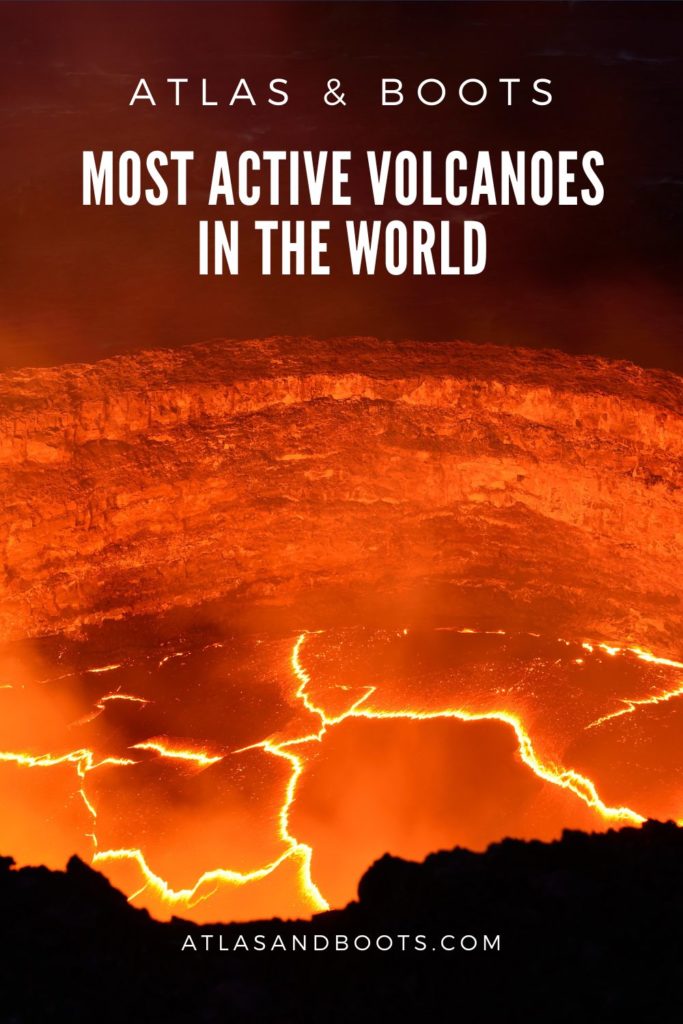
Violent Earth is a spectacular visual exploration of the most awe-inspiring and dramatic events in nature: earthquakes, eruptions, lava fountains, mud slides, tsunamis and more.
